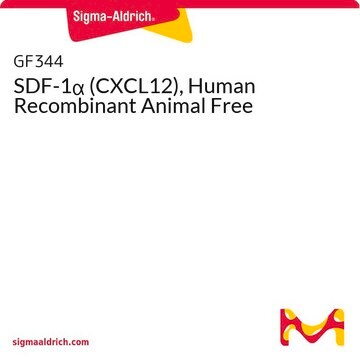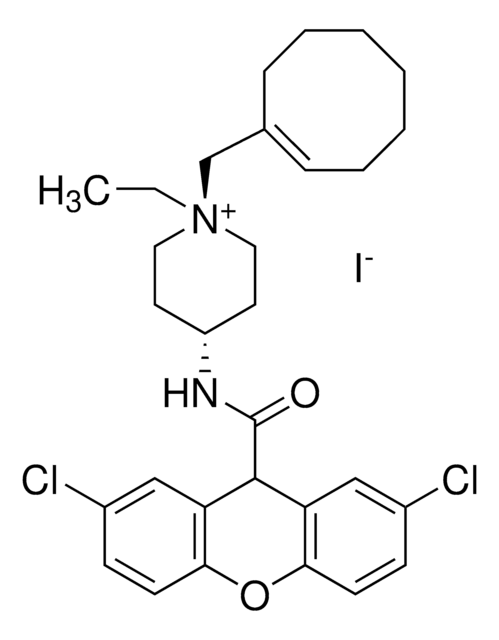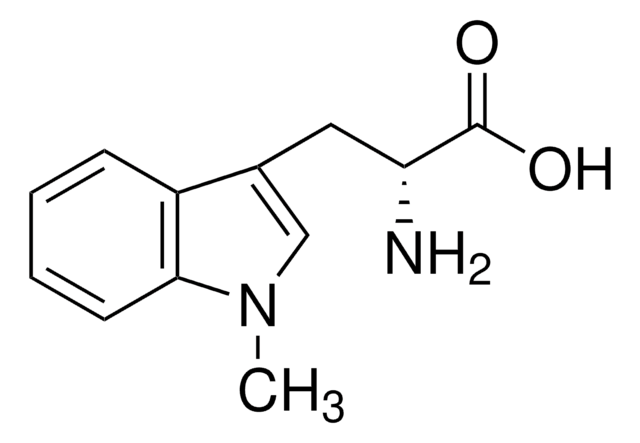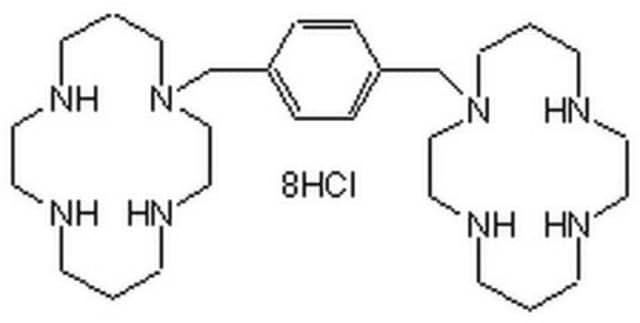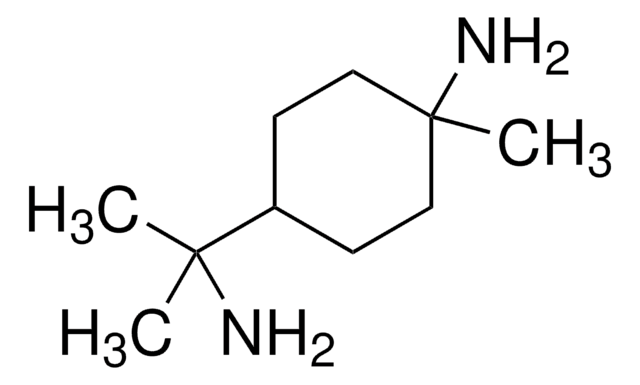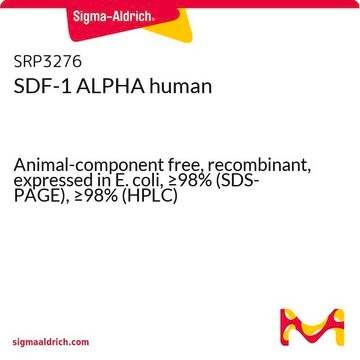SML1720
ATI-2341 trifluoroacetate salt
≥95% (HPLC)
别名:
ATI 2341 trifluoroacetate salt, N-(1-Ohexadecyl)-L-methionylglycyl-L-tyrosyl-L-glutaminyl-L-lysyl-L-lysyl-L-leucyl-L-arginyl-L-seryl-L-methionyl-L-threonyl-L-α-aspartyl-L-lysyl-L-tyrosyl-L-arginyl- L-leucine, Pal-MGYQKKLRSMTDKYRL, Pal-Met-Gly-Tyr-Gln-Lys-Lys-Leu-Arg-Ser-Met-Thr-Asp-Lys-Tyr-Arg-Leu
登录查看公司和协议定价
所有图片(1)
About This Item
经验公式(希尔记法):
C104H178N26O25S2 · xC2HF3O2
CAS号:
分子量:
2256.82 (free base basis)
分類程式碼代碼:
12352200
NACRES:
NA.77
推荐产品
生化/生理作用
ATI-2341 is a potent and selective allosteric agonist of chemokine CXC-type receptor 4 (CXCR4) that functions as a biased ligand, favoring Gαi activation over Gα13. ATI-2341 does not promote β-arrestin recruitment. ATI-2341 promotes the mobilization of PMNs and HSPCs in the peripheral circulation of both mice and monkeys.
儲存類別代碼
11 - Combustible Solids
水污染物質分類(WGK)
WGK 3
閃點(°F)
Not applicable
閃點(°C)
Not applicable
Julie Quoyer et al.
Proceedings of the National Academy of Sciences of the United States of America, 110(52), E5088-E5097 (2013-12-07)
Short lipidated peptide sequences derived from various intracellular loop regions of G protein-coupled receptors (GPCRs) are named pepducins and act as allosteric modulators of a number of GPCRs. Recently, a pepducin selectively targeting the C-X-C chemokine receptor type 4 (CXCR4)
Jesús M Planesas et al.
Journal of molecular graphics & modelling, 60, 1-14 (2015-06-17)
Several examples of allosteric modulators of GPCRs have been reported recently in the literature, but understanding their molecular mechanism presents a new challenge for medicinal chemistry. For the specific case of the cellular receptor CXCR4, it is known that pepducins
Boris Tchernychev et al.
Proceedings of the National Academy of Sciences of the United States of America, 107(51), 22255-22259 (2010-12-09)
The G protein-coupled receptor (GPCR), chemokine CXC-type receptor 4 (CXCR4), and its ligand, CXCL12, mediate the retention of polymorphonuclear neutrophils (PMNs) and hematopoietic stem and progenitor cells (HSPCs) in the bone marrow. Agents that disrupt CXCL12-mediated chemoattraction of CXCR4-expressing cells
Serap Erdogmus et al.
Nature communications, 10(1), 5784-5784 (2019-12-21)
G-protein coupled receptors (GPCRs) are versatile cellular sensors for chemical stimuli, but also serve as mechanosensors involved in various (patho)physiological settings like vascular regulation, cardiac hypertrophy and preeclampsia. However, the molecular mechanisms underlying mechanically induced GPCR activation have remained elusive.
我们的科学家团队拥有各种研究领域经验,包括生命科学、材料科学、化学合成、色谱、分析及许多其他领域.
联系技术服务部门